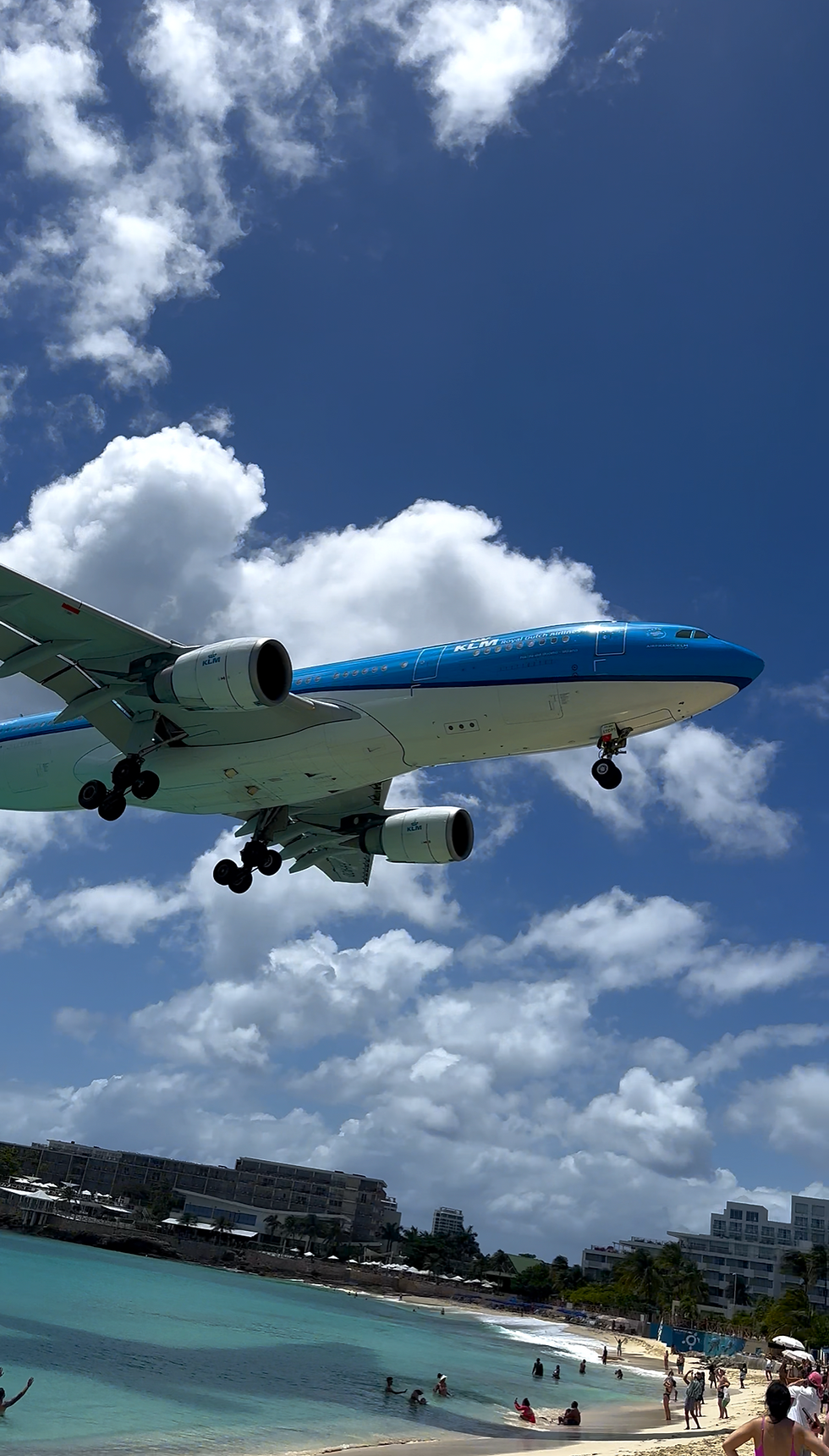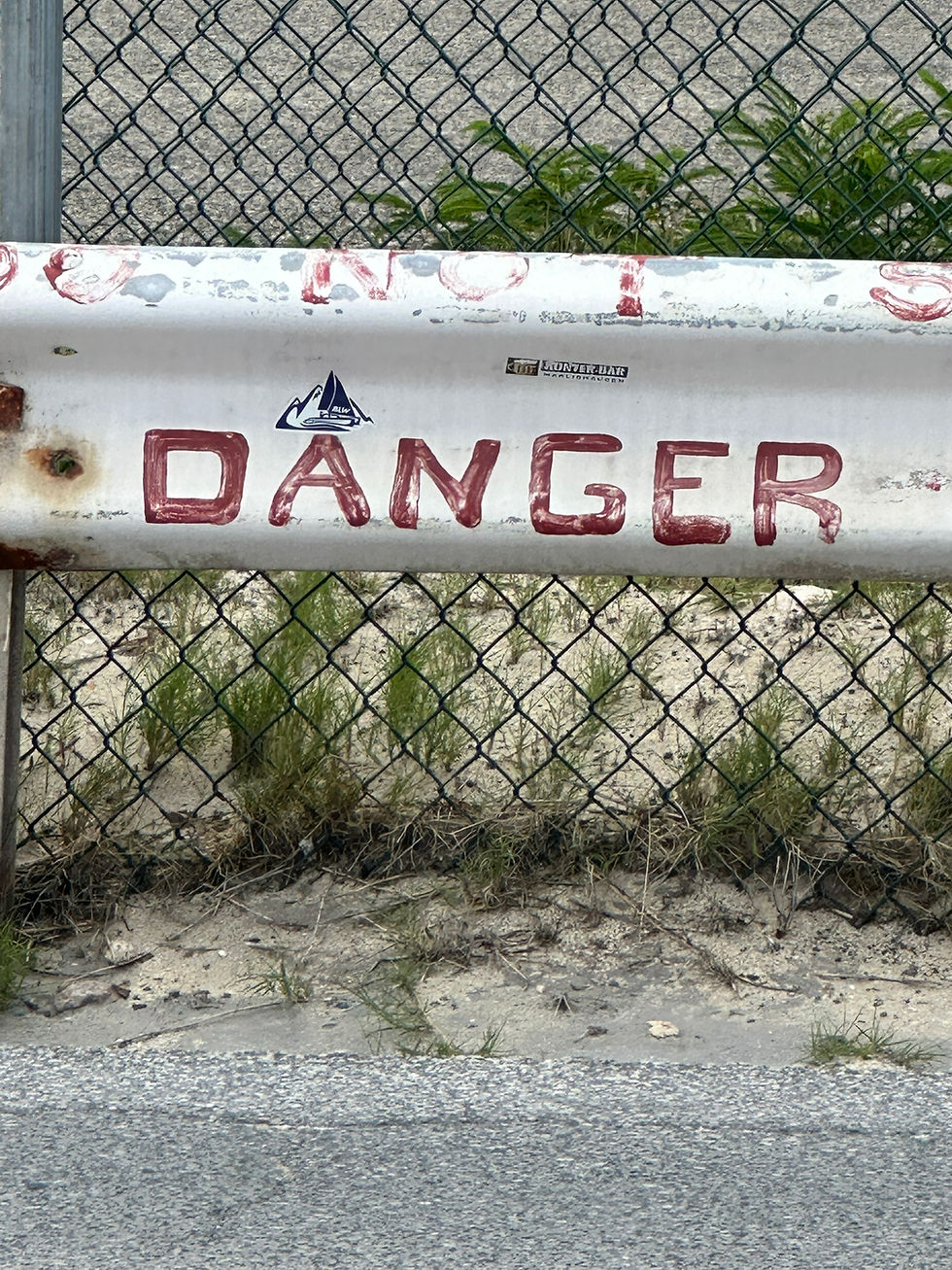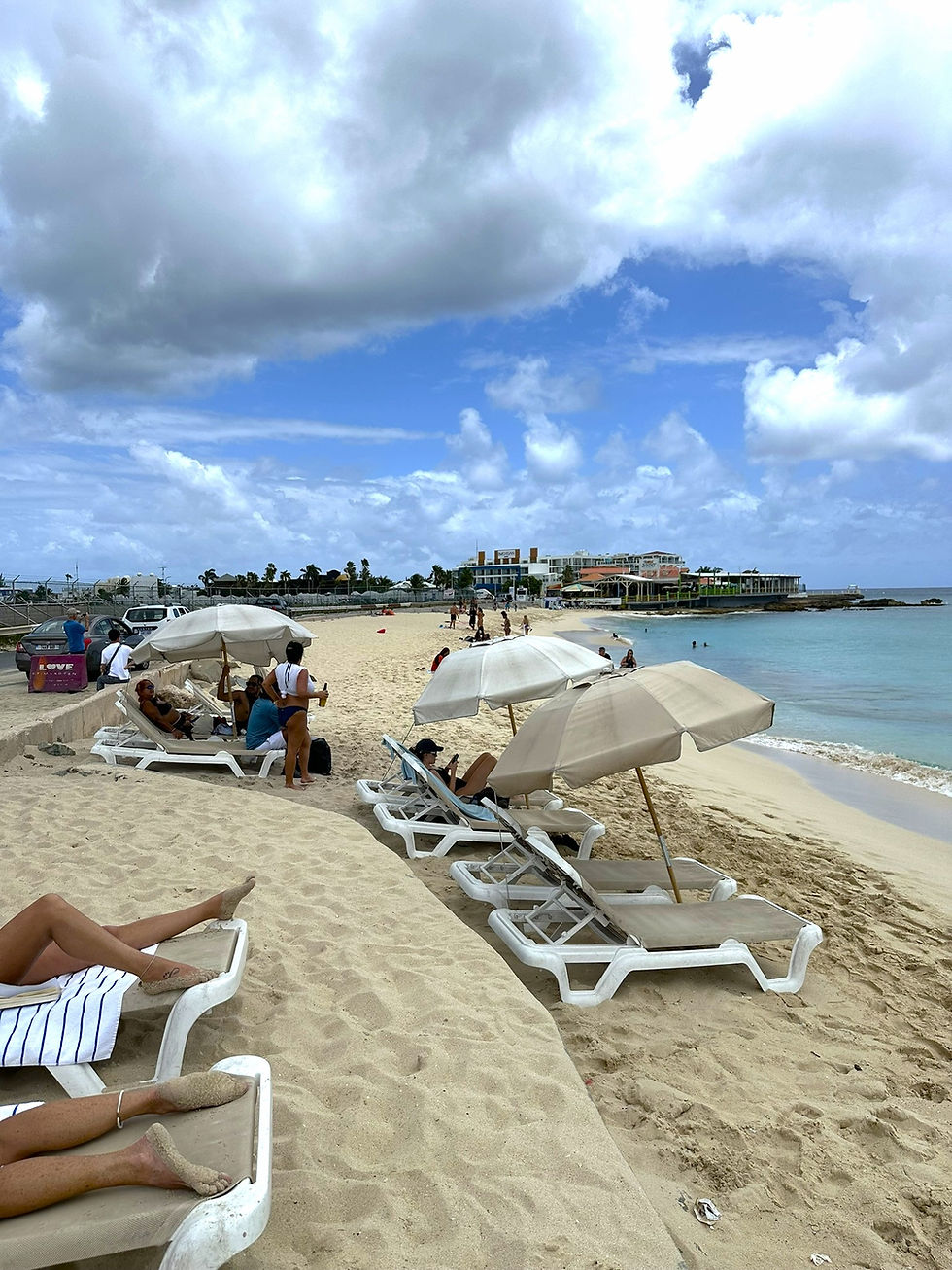Plane Spotting on Sint Maarten’s Famous Maho Beach: From Surf to Sky
- Mark Vogel

- Apr 16
- 5 min read
Updated: Jun 25
Maho Beach in Sint Maarten ✈

I touched down in Sint Maarten at Princess Juliana International Airport, the day before my planned visit to Maho Beach. As the wheels met Runway 10, I pointed my phone at the sand-colored ribbon just beyond the airport fence and caught a line of sunburned onlookers gazing skyward. Their faces filled the frame as I skimmed a few dozen feet overhead and rolled to a stop. Watching them reminded me why this stretch of sand draws aviation fans from every corner of the planet: the spectacle of aircraft passing so close you can read the gear-door stencils. Today, it was my turn to experience it from the shoreline side.
Maho Beach sits at the southwestern edge of Sint Maarten’s Dutch territory, wedged between turquoise water and the threshold of one of the Caribbean’s busiest runways. The beach itself is narrow, barely wide enough for two rows of towels at high tide; even so, it carries the usual resort trimmings - powdery sand, gentle surf, and warm trade winds. Instead of families building sandcastles, though, most visitors arrive with telephoto lenses, aviation-band radios, or simple curiosity about how close a modern jet can approach human heads without touching them.
Book a Tour: Top Sint Maarten Tours

“I left Maho Beach with a phone full of footage and an even deeper respect for the mix of engineering and nature that makes this place unique.”

I arrived just after sunrise to stake a spot between the fence and the first wash of waves. A chalkboard outside the Sunset Bar listed anticipated arrivals, so I timed my morning around that schedule. The first planes to appear were island hoppers: Twin Otters and ATR turboprops that looked like toys compared with what was coming later. Their final approaches were gentle, yet the closeness felt unreal. Tires kissed asphalt less than ten seconds after the fuselage cleared the chain-link barrier, leaving the smell of kerosene in place of salt spray.

Mid-morning delivered the heavier metal I had hoped for. JetBlue’s A320 lined up first, its blue belly reflecting the sea below. The roar grew from distant growl to vibrating wall, and the wingtip fences flicked sunlight at ground level. Standing in ankle-deep water, I watched the landing lights bore straight toward my forehead before tilting upward in the flare. The crossbars of the approach lights passed over me like stadium rafters. Even knowing the physics, my mind insisted the jet would touch down on my shoulders. Instead, it slipped beyond the perimeter, tires chirped, and a burst of applause broke out along the sand.
American Airlines followed with a 737, silver skin glinting against a partly cloudy sky. By then the beach had filled with spectators lining up smartphones in portrait mode. Children stood on boogie boards for extra elevation; seasoned spotters narrated models and registration numbers as if calling a baseball game. A Delta A321 came next, its red-tail triangle perfectly framed against the royal-blue water. The crowd’s excitement rose with each heavier arrival because everyone knew the headliner was still inbound from Schiphol.

The KLM Airbus A330 appeared as a blue speck to the east before it turned onto final. Its wingspan dwarfed the beach, and the descent rate felt deliberately slow, stretching the suspense. When it reached the fence line, spectators ducked instinctively. I felt the shock wave in my chest first, then tasted grit as jet wash lofted dry sand into the air. For a fraction of a second, the aircraft filled every part of my vision - belly panels, flap track fairings, landing gear struts - then it eased onto the runway, reversers deployed, and the sound trailed off toward Simpson Bay Lagoon. My footage will never convey the sensory overload: the smell of hot engines, the physical pressure of displaced air, the simultaneous cheers from dozens of strangers.

Between arrivals, I noticed how routine beach life and aviation life coexist. Swimmers floated beyond the breakers while a JetBlue ground crew marshalled aircraft less than 200 yards away. Surfboard rentals leaned against the fence beside warning signs that show a cartoon figure blown off the sand. The contrast is almost comical: paradise meets heavy industry, and somehow it works.
After lunch I repositioned near the departure end to witness the second act: takeoffs. Spotters refer to it as “catching the blast,” a phrase that sounds tame until you feel it. Planes line up facing the Caribbean, hold brakes, bring engines to full thrust, and then release. The exhaust isn’t just wind; it’s a moving wall of heat and force powerful enough to fling loose items - and occasionally people - into the ocean.
Signs mounted on both sides of the road warn that jet blast can cause severe bodily harm, yet some visitors foolishly still cling to the fence for a thrill. In 2017 a woman standing too close was knocked off her feet and suffered fatal injuries, a sobering incident that prompted local authorities to add more reminders and barriers. I made a point of staying well back on the sand. Even at that distance, the takeoff roll of a departing American Airlines 737 punched through me like a sudden storm squall. My hat launched skyward, arced into the surf, and began drifting. I splashed after it and grabbed the brim before it soaked beyond rescue. Not everyone was so lucky; a pair of flip-flops and a striped beach towel sailed past the foam line, never to return.

The most intense blast came from a Delta narrow-body bound for Atlanta. Engines wound up to a metallic howl, sand lifted in a swirling cone, and for a moment the beach looked like a desert in a dust devil. People braced themselves, some turning backs to the wind, others locking elbows. Camera shutters clicked in continuous bursts; then the aircraft leapt forward, nose rising against the horizon, and the torrent stopped as abruptly as it started.
Each takeoff underlined how thin the margin is between adrenaline sport and real danger. The fence is short, the runway threshold is close, and the temptation to inch forward for a better selfie grows with every roar of engines. Local residents refer to visitors who ignore the rules as “fence runners,” and many shake their heads when another tourist leaves with sand-burned calves or a bruised ego. Personally, I found the view from a respectful distance thrilling enough. The camera zoom handled the rest, and my shoes remained dry.

By late afternoon the sun slipped west, tinting the sky orange and turning inbound aircraft into silhouettes. I wrapped up the day the same way it began: watching newcomers stare upward in disbelief as planes passed overhead. The light changed, but the rhythm remained constant—final approach, touchdown, turn off the runway, back-taxi for departure, throttle-up, liftoff. Between cycles, the Caribbean’s usual calm reclaimed the scene until the next set of landing lights appeared on the horizon.

I left Maho Beach with a phone full of footage and an even deeper respect for the mix of engineering and nature that makes this place unique. The beach itself might not rank among the island’s top swimming spots, yet the experience of standing below an arriving wide-body or feeling the shove of a departing jet leaves a stronger memory than any postcard sunset. For aviation fans it is a rite of passage; for casual visitors it serves as proof that travel can still surprise in an age of routine flights and predictable itineraries. Either way, remember the basics: check the arrival board, keep an eye on your belongings, and give those engines the distance they deserve. I plan to return on my next visit - but I’ll be tying my hat’s chinstrap a little tighter.
Book a Tour: Top Sint Maarten Tours




















Comments